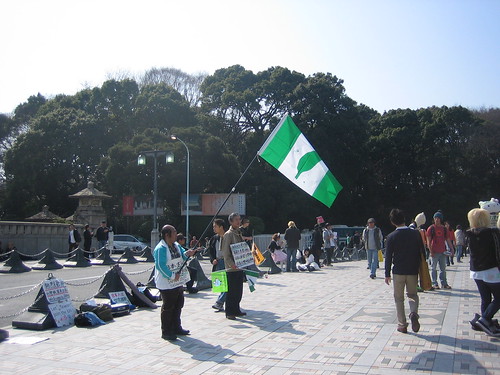A high-level US court just ruled that American paper money must be redesigned so that blind people can distinguish bills by denomination. Other countries accomplish this through subtle tactile differences or different bill sizes, but all US currency feels more or less the same, at least when it’s fresh off the presses.
When I went to Albany in February to be sworn into the New York bar, I had a number of odd experiences, among them:
- Drinking Chinese state-brewed beer in a sketchy hotel room while discussing what would happen if they went to war with Japan (this would have led to nothing good had the sole Chinese attendee not decided to “go to bed” early)
- Sitting in a crowded waiting room next to a lawyer who works literally within eyeshot of my office window in Tokyo
- Touching a girder from the World Trade Center
But probably the weirdest experience was when I bought a pack of gum inside the New York state government Cloud City.
Everything was normal until I went to the cashier. I put the gum on the counter. The cashier said “Hi, what are you getting today?” For many people, that would merit some kind of sarcastic response. As usual, I bit my tongue, which was probably a good thing because the cashier was blind.
I tried to act as un-shocked as possible, and said “Umm, a 5-pack of Doublemint.”
“OK,” she said, and started pushing buttons on the register. The register read out the numbers as she pushed them. “POINT SIX NINE ENTER. SEVENTY-THREE CENTS.”
“That’ll be 73 cents,” she said.
I handed her a five-dollar bill.
“Out of how much?” she said.
“Uhh, out of five.”
Anyway, I wonder whether she works there all the time. Maybe they just put her there on bar admissions day as an ethics test for new lawyers. Or maybe people really work on the honor system in Albany. Who knows. At least her job will be a bit easier in a few years’ time…








